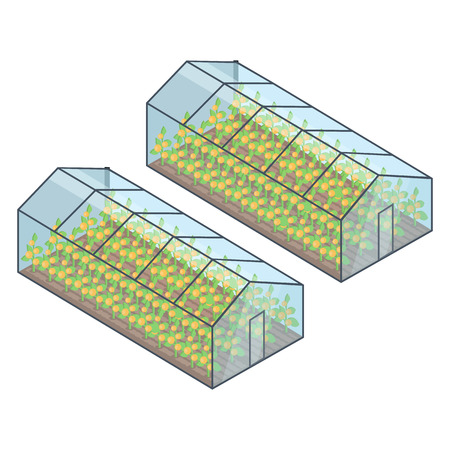1. Understanding Your Perennials
Before you can effectively protect your perennial plants during the harsh winter months, its important to understand what types of perennials youre working with and how they respond to cold weather. Not all perennials are created equal—some are naturally more tolerant of freezing temperatures, while others need a little extra care to make it through the season.
Know Your Hardiness Zone
The USDA Plant Hardiness Zone Map is a great tool for gardeners across the United States. It divides the country into zones based on average minimum winter temperatures. By identifying your zone, you can better understand which perennials are most likely to thrive in your area and which may struggle during extreme cold snaps.
How to Find Your Zone
You can easily find your hardiness zone by visiting the USDAs website or using online zip code tools. Here’s a quick reference:
| Zone | Average Minimum Temperature (°F) | Regions |
|---|---|---|
| 3 | -40 to -30°F | Northern Minnesota, North Dakota |
| 5 | -20 to -10°F | Midwest, parts of New England |
| 7 | 0 to 10°F | Southeast, Mid-Atlantic |
| 9 | 20 to 30°F | Florida, Southern Texas, Coastal California |
Assess Winter Susceptibility
Once you know your zone, take a look at the perennials in your garden. Some species are naturally hardy and can handle deep freezes without any extra help. Others may need mulching, covering, or even temporary relocation to survive.
Examples of Hardy vs. Tender Perennials:
| Hardy Perennials (Less Protection Needed) | Tender Perennials (More Protection Needed) |
|---|---|
| Daylilies | Dahlias |
| Hostas | Cannas |
| Peonies | Elephant Ears (Colocasia) |
By understanding which plants are most vulnerable, you can prioritize your winter protection efforts and make sure everything has the best chance of coming back strong in spring.
2. Timing Your Preparations
When it comes to protecting your perennials from winter damage, timing is everything. Starting too early can leave plants vulnerable to unexpected warm spells, while waiting too long might expose them to frost damage. Knowing your region’s average first frost date is key to planning properly.
Know Your Frost Dates
The average first frost date varies across the United States depending on your USDA Hardiness Zone. Use the table below to get a general idea of when to begin preparing your perennials for the cold months ahead:
| USDA Hardiness Zone | Average First Frost Date | Suggested Start Time for Winter Prep |
|---|---|---|
| Zone 3 (e.g., Northern Minnesota) | Mid-September | Late August to Early September |
| Zone 4 (e.g., Maine, North Dakota) | Late September | Early to Mid-September |
| Zone 5 (e.g., Ohio, Illinois) | Early October | Mid to Late September |
| Zone 6 (e.g., Missouri, Kansas) | Mid-October | Late September to Early October |
| Zone 7 (e.g., Virginia, Tennessee) | Late October | Early to Mid-October |
| Zone 8 (e.g., Texas, Georgia) | Early November | Mid to Late October |
Watch the Weather Forecast
A good rule of thumb is to start preparing your perennials about two weeks before your area’s expected first frost. However, local weather patterns may shift from year to year, so keep an eye on the forecast. If a sudden cold snap is predicted earlier than usual, it’s better to begin prepping right away.
Signs It’s Time to Start Preparing:
- Nights are consistently dipping below 40°F (4°C)
- You notice leaves turning color or falling off trees
- Your gardens soil starts staying moist longer during the day
Tip:
If youre unsure about your exact zone or frost dates, you can check with your local extension office or use online tools like the USDA Plant Hardiness Zone Map or the Old Farmer’s Almanac frost date calculator.

3. Mulching Techniques for Insulation
Mulching is one of the easiest and most effective ways to protect your perennials during the cold winter months. By adding a layer of mulch to your garden beds, you create a natural insulation barrier that helps regulate soil temperature, retain moisture, and protect plant roots from harsh freeze-thaw cycles.
Benefits of Winter Mulching
- Temperature Regulation: Mulch keeps the soil consistently cool in fall and warm enough in early spring to prevent root shock.
- Moisture Retention: It helps the soil hold onto moisture, which is crucial when the ground freezes and water becomes less accessible to plants.
- Protection from Frost Heave: Mulch reduces the chances of frost heave, where repeated freezing and thawing push plants out of the ground.
- Pest and Weed Control: A good mulch layer can suppress weed growth and deter some pests.
Best Types of Mulch for Winter Protection
Not all mulches are created equal when it comes to winter protection. Here’s a quick guide to help you choose:
| Type of Mulch | Description | Best Use |
|---|---|---|
| Straw | Lightweight and breathable; excellent insulator | Around delicate perennials and vegetable beds |
| Pine Needles | Acidic and airy; decomposes slowly | Beds with acid-loving plants like azaleas or blueberries |
| Shredded Leaves | Easily available and breaks down into rich compost | Around most perennial flowers and shrubs |
| Bark Mulch | Long-lasting; provides solid coverage | Around trees, shrubs, and well-established perennials |
How to Properly Apply Winter Mulch
The timing and technique of mulching are just as important as the material you use. Follow these simple steps:
- Wait Until After the First Hard Frost: Applying mulch too early can trap heat in the soil and delay dormancy. Wait until the ground has frozen slightly.
- Add a 2–4 Inch Layer: Too little won’t insulate properly, while too much can suffocate plants or attract rodents.
- Avoid Piling Against Stems: Keep mulch an inch or two away from plant stems or crowns to prevent rot.
- Smooth It Out Evenly: Spread mulch evenly across your garden beds for consistent protection.
Helpful Tip:
If youre in a windy area, consider using heavier mulch like bark or anchoring straw with garden netting to keep it in place through winter storms.
A well-mulched garden not only looks tidy but also gives your perennials a better chance at thriving come spring. Take a little time now, and your future self—and your plants—will thank you!
4. Using Protective Coverings
When winter temperatures drop and harsh winds start to blow, your perennials can really take a beating. One of the most effective ways to protect them is by using physical coverings that act as a barrier against the cold. Materials like burlap, frost blankets, and cloches are popular choices for gardeners across the U.S., especially in regions with freezing winters.
Choosing the Right Covering
Different materials serve different purposes depending on your local climate and the type of perennials you’re growing. Here’s a quick comparison to help you decide:
| Material | Best For | Benefits | Tips |
|---|---|---|---|
| Burlap | Windy areas, evergreens | Breathable, blocks wind and sunscald | Wrap loosely around plants or create a burlap screen |
| Frost Blankets (Garden Fabric) | Frost-prone zones, tender perennials | Lightweight, easy to drape over large areas | Secure with landscape pins or rocks; remove during warm spells |
| Cloches (Plastic or Glass Covers) | Individual plants, small gardens | Traps heat, protects from snow and ice | Avoid overheating on sunny days—vent if needed |
How to Apply Coverings Effectively
No matter which material you choose, proper installation is key. Make sure the covering extends all the way to the ground to trap warmth and keep out drafts. For low-growing perennials, lay fabric directly over the plant and anchor it securely. For taller varieties, consider building a frame with stakes and then draping your material over it. This prevents breakage from heavy snow buildup.
Extra Tips for Success:
- Always apply coverings before the first hard freeze.
- Remove any wet or decaying leaves before covering to avoid mold growth.
- If using plastic covers, ensure they don’t touch the plant directly—this can cause freezing where contact occurs.
- Check periodically throughout winter to make adjustments if needed.
5. Watering and Soil Considerations
Taking care of your perennials before winter really kicks in starts with how you water and treat your soil in the fall. These two steps can make a big difference in helping your plants survive freezing temperatures and avoid issues like frost heaving.
Watering Before the Ground Freezes
As temperatures drop but before the ground freezes solid, it’s important to give your perennials one last deep watering. This helps the plants stay hydrated through winter, especially since they won’t be able to take up moisture once the ground is frozen. Dry roots are more susceptible to cold damage, so this step is key for winter survival.
Tips for Late Fall Watering:
- Water when daytime temps are still above freezing (ideally 40°F or higher).
- Aim for a slow, deep soak to reach root zones—about an inch of water.
- Avoid watering right before a hard freeze to prevent ice damage around roots.
Soil Amendments to Boost Winter Resilience
Healthy soil helps protect perennial roots from extreme temperature swings. Adding organic matter in the fall not only improves drainage and aeration but also insulates roots and supports microbial activity over winter.
Recommended Soil Additions:
| Amendment | Purpose | When to Apply |
|---|---|---|
| Compost | Adds nutrients, improves structure | Late fall, after cutting back perennials |
| Leaf mold | Improves moisture retention and insulation | Spread as mulch in early winter |
| Aged manure | Slow-release nutrients, boosts microbes | Mix into topsoil before first frost |
Preventing Frost Heaving
Frost heaving happens when soil repeatedly freezes and thaws, pushing plant roots up toward the surface where they can dry out or freeze. One way to reduce this risk is by ensuring good soil drainage—wet soils freeze and thaw more aggressively. Another way is by applying mulch after the ground begins to freeze slightly. This stabilizes soil temperature and keeps roots securely in place.
Mulching Tips:
- Use 2–4 inches of straw, shredded leaves, or bark mulch.
- Avoid piling mulch directly against plant crowns—leave some space.
- Add mulch after a few light frosts but before heavy snow.
By combining smart watering habits with thoughtful soil care, you’ll give your perennials their best shot at coming back strong next spring—even after a tough winter.


